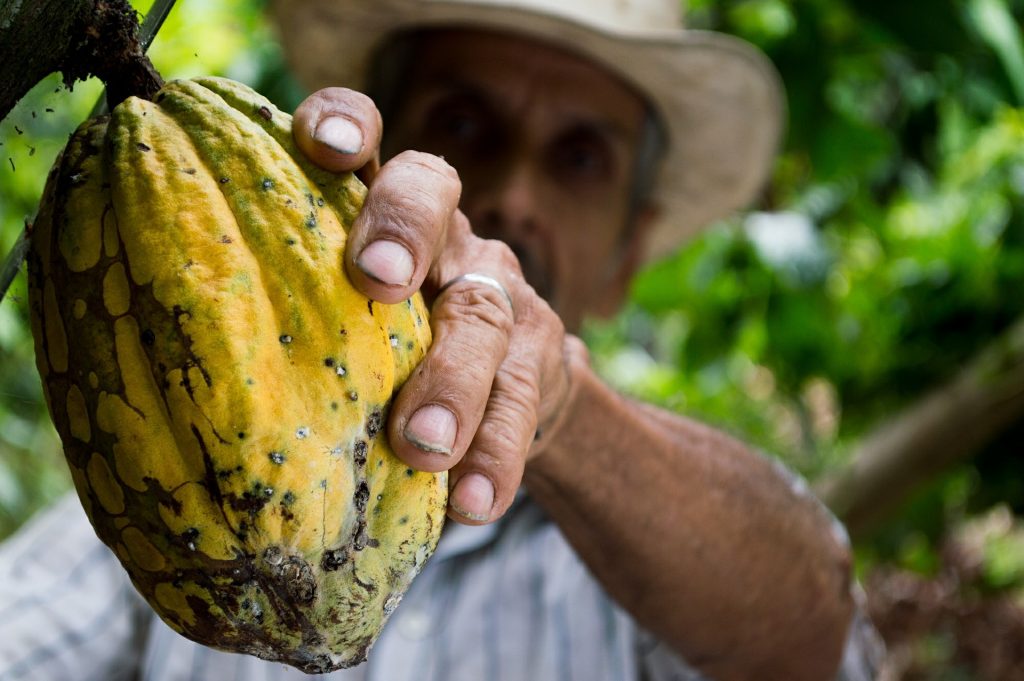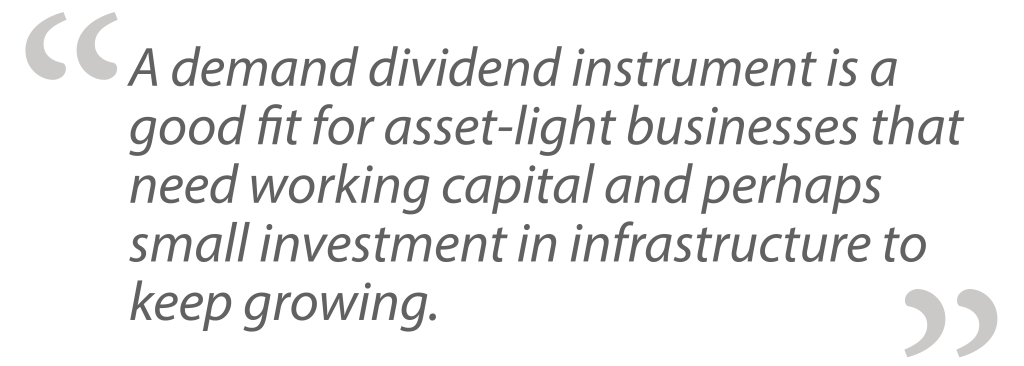March 2017
Pomona Impact launched in Guatamala in 2011 and makes investments in small growing businesses in Central America, Mexico, Colombia, and Ecuador. Pomona Impact particularly targets firms that improve the lives of people living in the bottom of the economic pyramid and/or benefit the environment, and has thus far made investments ranging from $50,000 and $250,000 in 16 companies. Pomona Impact is currently raising a $20-30 million mezzanine fund focused on agriculture and basic services in Central America. We spoke to Rich Ambrose, Co-Founder and Managing Partner, in October to learn about his experience using variable repayment debt to invest in social enterprises in Latin America.
CASE i3: What is Pomona Impact’s sweet spot for investments?
We call it early growth stage; most of our investees have completed pilots and have proven a certain level of customer satisfaction. We dig in to understand the happiness factors for the customer as a key part of our due diligence and we try to understand the market segment really well. We steer away from unproven technology risk – the product needs to work. However we do work in sectors with higher commercial risk. We reduce that risk by developing a sound understanding of the market and how customers substitute this product for others. We also like to see a minimum of $100,000 in sales. Companies don’t have to be cash flow positive or profitable. We understand many of them require scale in order to reach profitability, and our investment helps them get there.
We also place a lot of consideration on the caliber of the entrepreneur. We’re looking for grit, learning agility, integrity, and passion. It’s a cliché to say, but we greatly prefer the A entrepreneur with a B business plan to a B entrepreneur with an A business plan.
What is the hurdle rate for investment?
We target approximately an 18% base case return for each investment. We can underwrite cash flows, not just hard assets. We have a high degree of flexibility, work to align cashflows with repayment schedules, and often provide a healthy grace period before repayments are scheduled to begin. That said, investment terms vary based on the risk profile of the deal.

Tell us about your demand dividend investment with Uncommon Cacao.
We met CEO Emily Stone and liked her right away. She exuded passion for her product (cacao/chocolate), articulated a clear growth strategy, and spent years on the ground in Belize learning growing best practices and working with small holder farmers. Our friends at Eleos Foundation ended up leading the round and worked with the Global Social Benefit Institute (GSBI) at Santa Clara University to structure the demand dividend investment we ultimately utilized.
How is the demand dividend different from other investment vehicles?
We utilized similar structures to the demand dividend in the Central American Mezzanine Infrastructure Fund (CAMIF) that I had worked in prior to Pomona Impact. In that CAMIF, we scheduled principal repayment, added a little interest, and took payments as an EBITDA (earnings before interest, tax, depreciation, and amortization) share.
The primary difference between the CAMIF investments and the investment Pomona Impact made in Uncommon Cacoa is that Uncommon’s payment obligations were based solely on free cash flow (FCF) instead of a scheduled repayment of principal + interest + EBITDA share. A challenging aspect of the demand dividend instrument is that calculating free cash flow is more of a back and forth – particularly if these companies aren’t able to afford audited financial statements. As a result, we’ve now gravitated toward revenue-based financing instruments that take a percentage of revenue instead of EBITDA or free cash flow or profits. It’s much easier to verify and we can do a pretty good job at agreeing.
The other issue with taking payments based on free cash flow is that we had to have a governance structure to agree on major expenditures. So if the company wanted to make any material, unscheduled capital expenditures that differed from their original business plan, they had to make a business case and get approval from all lenders in the deal. The revenue-based financing structure is a little more cut and dry.
How much did you put in the Uncommon Cacao demand dividend deal?
We put in $35,000 of a $200,000 round. There was a grace period to allow for free cash flow before they had to make payments. It was a 7-year deal. And it had a cap: they would pay us 40% of free cash flow until we got a 2X return.
What happened?
Emily made incredible progress with the business and developed a new plan to accelerate growth that required a substantial equity raise. Not surprisingly, the early stage equity investors don’t like to see free cash flow payments going to repay the demand dividend note holders and thus asked us to convert our interest and participate in their series A. We agreed as Emily had developed some viable exit strategies – i.e. being acquired by US-based companies who want to secure ethical cacao sourcing.
Emily had a two year grace period (with the demand dividend note) and thus never made a payment to us before the conversion. But her revenues were up and other metrics were phenomenal. So she did a $1.5 million Series A round in 2016. We converted our loan into equity, but at a 2x rate. So instead of owning $35,000 of the deal, we own $70,000 of $1.5 million. All demand dividend note holders did the same.
So what do you advise about best circumstances for demand dividend vs. equity?
Demand dividend is good for operating businesses that are generating free cash flows but that aren’t able to obtain bank financing because they lack the necessary collateral. (In Central America banks are still very traditional and underwrite loans almost exclusively on collateral value.) A demand dividend instrument is a good fit for asset-light businesses that need working capital and perhaps small investment in infrastructure to keep growing. In general, it’s a good fit for ‘life-style’ businesses. In contrast, if a company has very strong growth prospects where it is several years out from generating positive free cash flows and/or intends to reinvest all free cash flows to accelerate growth, it may make more sense for them to pursue a more traditional venture capital approach and raise pure equity.

At Pomona Impact we take an ‘in-between’ approach. Pure equity is too risky in Central America as it’s hard for companies to scale aggressively given the small markets and the prospects for an exit are rather poor given the illiquid capital markets. So we prefer to utilize a revenue-based financing instrument with structured exits primarily coming from royalties (that is, a percent of revenue). In cases where we add in an equity kicker using warrants, we have a contract in place with the management to ensure that we can sell the warrants back to the company at a pre-agreed multiple.
Our colleagues at Adobe Capital will do a revenue share deal with ability to convert to equity within a certain period of time. We tend not to include the convertibility option because it lends more complexity into the deal – thus making it harder to close. We’ve found that with entrepreneurs, every layer of complexity in deal structure weakens the chances of closing that deal.
What advice do you have for entrepreneurs considering revenue-based financing?
Map out what the main milestones for your business are. If you see rapid growth with a sizable burn rate which is cashflow negative for years, perhaps venture capital may be more appropriate. Mezzanine is a good fit for 1) reducing equity requirements in a capital stack when investing in large infrastructure (i.e. $10mm new factory which will be funded by $5mm senior debt, $2mm mezzanine and $3mm of equity), 2) serving as risk capital when you can’t find angel/venture capital funding, and 3) modular businesses keen to fund expansion and step-up costs. For the sake of clarity, a modular business is one that grows in chunks (i.e. step up costs); think of an existing factory that needs to invest in additional machinery to expand production capacity or a low-income housing builder that is keen to launch a new development.
So, let me see if I get this. Let’s say I operate a maternity clinic chain in Kenya. We have two clinics and want to build a third. The two are about to break even and we can design the third to breakeven within 18 months. We need upfront cash for the lease and equipment. Good revenue-share possibility?
Yes, that’s exactly the kind of circumstance I’m talking about.

